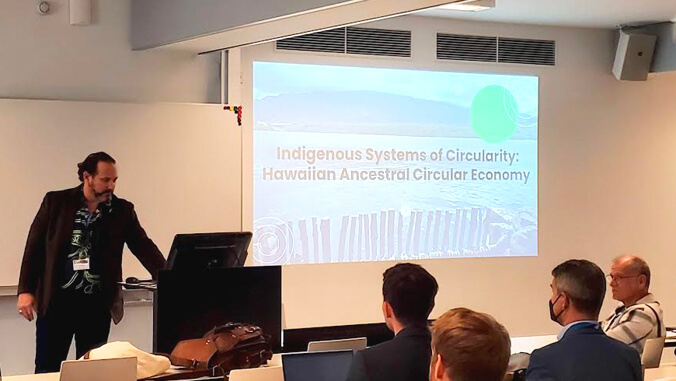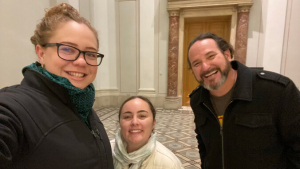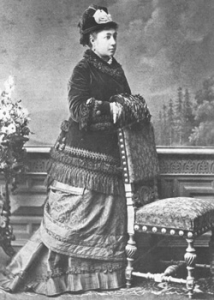
An international movement geared toward combating climate change by redesigning cities to function more sustainably recently recognized traditional Native Hawaiian strategies presented by a University of Hawaiʻi at Mānoa professor. Kamakakūokalani Center for Hawaiian Studies Professor and Endowed Chair in Hawaiian Studies, Literature and the Environment Kamanamaikalani Beamer from the Hawaiʻinuiākea School of Hawaiian Knowledge captivated audiences at an international economic conference in Vienna this fall with fresh perspectives steeped in vital concepts that allowed Hawaiʻi’s Indigenous population to thrive for centuries.
Related:Beamer selected as inaugural endowed chair at Hawaiʻinuiākea, May 2021
“Our work is really trying to work alongside and uplift aloha ʻāina (love for the land). This Indigenous philosophy is about our relationship between Papa, Mother Earth, and us as a people. It allows us to infuse incredible regenerative practices of our kūpuna (elders) into transition and change today,” Beamer said.
Circular economy
This September, Beamer and UH Mānoa graduate students Kawena Elkington and Pua Souza presented at the International Society for Industrial Ecology Conference at the University of Vienna School of Business and Economics in Austria. The researchers were the only team from Hawaiʻi and believed to be the only Indigenous-focused presenters.
The conference featured prominent scholars from around the world who highlighted ideas based on circular economy strategies. A circular economy is a regenerative system that minimizes how energy is produced and consumed, and incorporates long-lasting design and maintenance through reducing, reusing and recycling.
According to Beamer, cities across Europe are competing to become more circular and areas like Amsterdam and Vienna have successfully redesigned cities to be more walkable and refined public transportation to be more green.
Ancestral circular economy
Beamer and his two graduate students, alongside a fellow Hawaiʻi-based multidisciplinary ecologist and industrial ecologists from the University of Augsburg, recently published research based on regenerative practices that allowed ancient Hawaiʻi’s society to be self-sustainable for thousands of years. The team dove into Hawaiian literature, biocultural perspectives, and industrial ecology research to identify key principles that formed Hawaiʻi’s ancestral economy.
- Balanced bottom-up and top-down resource governance
- Kālai ʻāina (regular and systemic redistributions of wealth and power)
- Environmental kinship
Paving ke ala hou (a new path)

The 7,700 mile trip to Vienna was a first for both of Beamer’s fourth year PhD students who took on the experience feeling both intimidated and inspired to be part of a robust conference on a global scale.
Souza, a native of Kohala, reveled in participating in discussions with other international students on policy development around circular economies.
“If you would’ve told me when I first started at UH that I would end up in Vienna at a conference on economics and social economic metabolism I really wouldn’t have believed you,” Souza explained. “And that’s not because I saw myself as incapable in any way more so that I didn’t see these opportunities as accessible or manageable. Being able to have this opportunity and kind of get my foot in the door, just on a personal level, it opens up this whole new part of research and international engagement.”
Elkington, from Koʻolaupoko, recalls being taken aback by how many conference attendees were moved by Beamer’s presentation, which included traditional Hawaiian protocol like oli (chant).
“When your work touches people on an emotional level it’s more likely to resonate with them on that intellectual technical level,” Souza said. “That was my take away, merging those two things and seeing the impact it can have.”
Retracing aliʻi (royal) footsteps

After the trip, Elkington researched if any Hawaiian royals visited the city in the past, since monarchs of the Hawaiian Kingdom often visited Europe. In Ke Aliʻi (Noble) Bernice Pauahi Bishop’s diary of her travels to Europe in 1875, she wrote about visiting the city of Vienna during wintertime. Bishop was fond of the opera, theatre and the city’s architecture. One of the entries depicts Bishop’s experience on a sleigh ride mentioning it was her first and last because of how cold it was.
The recollection struck a chord with Elkington and Souza, recalling how they both quickly discovered they failed to pack enough frigid friendly attire to brave the crisp temperatures that dipped into the 40s.
“We were all ready to leave the hotel and when we walked outside I don’t think we made it about 20 feet. We agreed to go back inside and put more clothes on because it was too cold,” Elkington said.
Holo mua (moving forward)
The team’s goal is to help carve a path forward for Hawaiʻi in proposing their research and other innovative practices being implemented internationally to address social economic injustice and environmental degradation in the islands.

